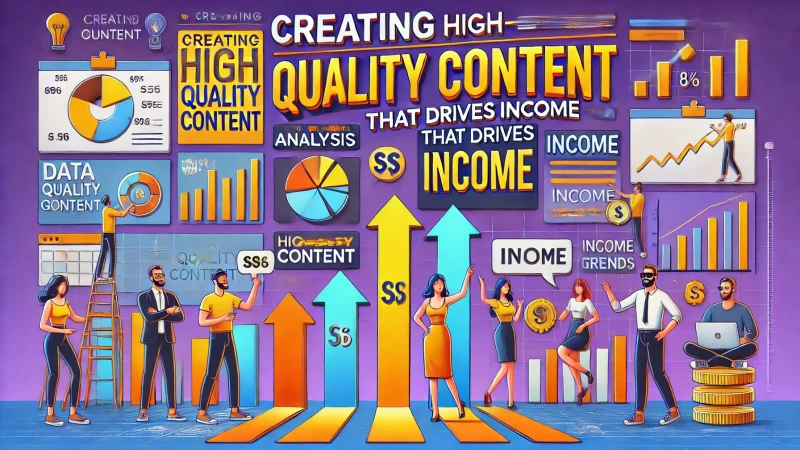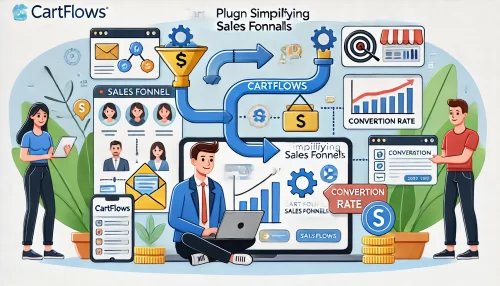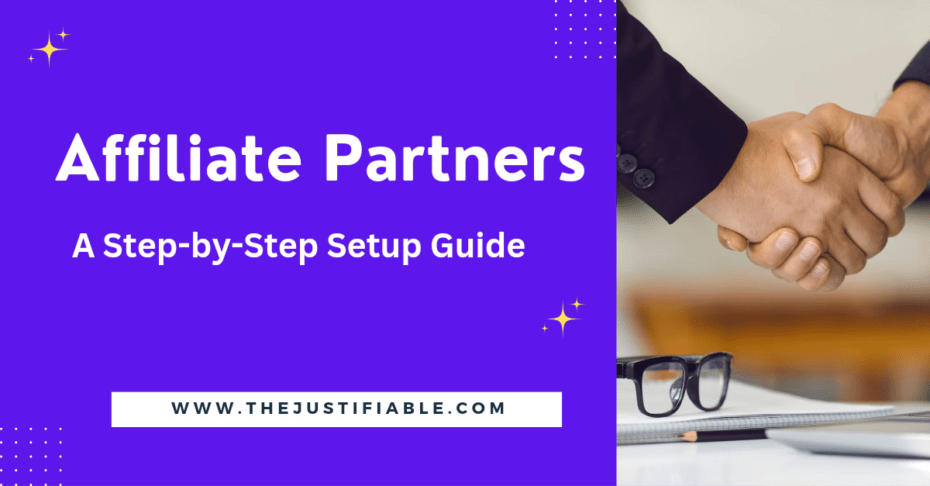Table of Contents
Do you want to create a blog and make money quickly? Are you tired of searching for ways to turn your blog into a profitable venture?
In this article, we’ll guide you step-by-step on how you can create a blog and make money in just 30 days, using real, achievable strategies. Let’s dive in to get you started on your journey to monetizing your blog successfully.
Essential Preparations To Create A Blog And Make Money
Creating a blog that makes money requires careful planning from the start. I suggest focusing on a niche that genuinely interests you and has proven income potential. By setting clear goals, you can ensure your blog remains focused and profitable.
I advise you to create a content calendar to keep track of your progress. It’s essential to identify your target audience early on, which will help you deliver the content they value. When you know your readers well, crafting effective blog posts becomes much easier.
Choose A Profitable Blogging Niche For Real Income
Selecting a niche is one of the most critical steps for making money with your blog. I recommend choosing a topic that interests you and has a high level of demand. Conduct market research to identify what audiences need and where potential monetization opportunities lie.
Finding a niche that offers profitability while aligning with your passion is key. By researching market trends, you’ll identify which niches are saturated and which are still ripe for growth. You can create unique content that stands out by focusing on underexplored topics.
It’s important to ensure that your niche allows for diverse income streams. This could be through affiliate marketing, ad revenue, digital products, or sponsorships. Establishing multiple revenue channels is essential for long-term profitability.
Make sure to evaluate your competition as well. Studying successful bloggers in your niche can provide insights into what works and what doesn’t. It’s about finding your unique angle in a space filled with similar content.
Lastly, assess your niche’s scalability. Can you grow beyond blog posts to offer courses, products, or consulting services? Thinking long-term helps you build a sustainable source of income.
Identify Target Audience For Your Blog’s Growth
Knowing your target audience is fundamental to your blog’s success. I recommend you define who they are, their needs, and their pain points. Understanding this helps you create tailored content that addresses their specific issues, increasing engagement and loyalty.
You may want to create audience personas—fictional representations of your ideal readers. This makes it easier to visualize who you’re writing for, helping you to craft relatable and valuable content. Focus on how your blog can solve their problems.
Identifying where your audience spends their time online will help you choose the best platforms to promote your blog. If they frequent social media, engage with them there to drive traffic. The better you know their habits, the more effective your marketing becomes.
Engaging directly with your audience through comments or social media can provide invaluable insights. Readers will often tell you what content they want. Use this feedback to refine your content and deliver what’s most useful to them.
A clear understanding of your audience will guide your content creation and promotional strategies. When you know what your readers need, you can build content that keeps them coming back, thereby increasing your monetization potential.
Set Realistic Blogging Goals To Ensure Monetization Success
Setting goals is crucial when you want to create a blog and make money. I suggest setting both short-term and long-term goals. Short-term goals keep you on track, while long-term goals focus on growth and scalability.
Make your goals specific, measurable, achievable, relevant, and time-bound (SMART). For instance, instead of just aiming to increase traffic, set a goal to reach 1,000 unique visitors per month. This provides a concrete target to work towards.
Monitoring your progress is also important. I advise regularly reviewing your goals to see if you are on track. Adjust your strategy if needed; flexibility helps you overcome obstacles and capitalize on new opportunities.
Prioritize income-generating activities, especially in the early days. Writing blog posts is great, but promoting them or focusing on revenue strategies like affiliate marketing will help you earn more quickly. Always balance content creation with monetization efforts.
Celebrating small wins can keep you motivated. Blogging takes time to grow, and it’s easy to get discouraged. Acknowledging milestones along the way can help maintain momentum and drive you towards bigger goals.
Create A Blog Plan And Content Calendar For Efficiency
A blog plan and content calendar keep your efforts organized. I find that planning ahead prevents feeling overwhelmed and ensures that you always have content ready to publish. Your calendar should cover topics, keywords, and deadlines.
Creating a blog plan starts with outlining your goals, both short-term and long-term. I advise you to plan content that aligns with these goals. Think about how each post can contribute to your overall monetization strategy.
Your content calendar should be more than just post titles. It should include keyword targets, publishing dates, and promotional plans. This ensures each blog post is optimized for SEO and reaches the audience effectively.
Consistency is key to blogging success. I recommend using tools like Trello or Google Calendar to track your content schedule. Staying consistent will help you build authority and keep readers coming back, which is crucial for monetization.
Flexibility is also important. If a trending topic relevant to your niche arises, adjust your calendar to accommodate it. Being adaptable helps your blog stay current and engage readers in real-time.
Setting Up Your Blog: Technical Essentials

Setting up your blog is about creating a solid foundation for long-term success. I recommend focusing on selecting the right tools and platforms that can grow with your blog. Investing time upfront in choosing the right setup ensures fewer headaches later.
Having the right technical elements in place makes your blog more efficient and user-friendly. From domain registration to hosting services, every decision impacts your site’s performance. A well-optimized blog encourages readers to stay, browse, and eventually become loyal followers.
Select The Right Blogging Platform For Profit Potential
The blogging platform you choose will play a significant role in your blog’s profitability. I recommend selecting a platform that offers flexibility, scalability, and ease of use. Platforms like WordPress are popular due to their customization options and vast support community.
Your platform should also be SEO-friendly, enabling you to implement strategies that increase traffic. If your platform lacks flexibility, it could limit your ability to monetize effectively. Always research and select a platform that matches your monetization plans.
Ease of integration with plugins and tools is another critical factor. A good platform will allow you to add essential features, such as analytics or monetization plugins. This makes it easier to manage your blog while maximizing its potential to generate income.
Customization options are also important. I believe a unique, well-designed blog can set you apart from competitors. Look for a platform that allows you to easily customize themes, ensuring your blog represents your brand while being visually appealing.
Lastly, consider the scalability of your platform. As your audience grows, you’ll need a platform that can handle increased traffic and added content without compromising performance. Scalability is essential to sustaining and growing your income.
Register A Memorable Domain Name To Attract Readers
Your domain name is often the first impression readers will have of your blog. I advise choosing a name that’s easy to remember, brandable, and directly related to your niche. A clear, concise domain name will make it easier for readers to find and return.
Avoid using complex words or long phrases in your domain. Simplicity is key—people should be able to remember your domain name after hearing it once. I suggest keeping it short, ideally two or three words, to maximize memorability.
Consider including a keyword related to your niche in your domain name. This can improve your SEO and help readers instantly understand your blog’s focus. However, don’t overcomplicate it—balance branding with clarity for the best results.
Check for availability across social media platforms too. Ideally, your domain name should also be available as a username on major social media sites. This helps create a cohesive brand presence that readers can easily recognize and follow.
Once you’ve chosen a domain, act quickly to secure it. Good domain names are in high demand, and waiting too long could mean losing out on the perfect one for your blog. Your domain is a key part of your brand identity—don’t underestimate its value.
Choose Reliable Hosting Services For Fast Blog Performance
Choosing the right hosting service impacts your blog’s speed, security, and reliability. I recommend opting for a hosting service that offers excellent uptime, speed, and customer support. A slow or unreliable host can turn readers away and negatively impact your SEO.
Look for a host that provides scalability. As your blog grows, your hosting needs may change, so having the ability to upgrade without major disruptions is crucial. Many hosting services offer flexible plans that accommodate growth, which I consider an important feature.
Security is another key consideration. Ensure your host offers features like SSL certificates, regular backups, and security monitoring. A secure blog is not only crucial for protecting your work but also for building trust with your readers.
I advise you to consider the customer support options. If anything goes wrong, responsive customer support can save you a lot of stress. Look for a hosting provider with 24/7 support via chat, email, or phone, ensuring you can resolve issues quickly.
Lastly, read reviews from other bloggers to get an understanding of real user experiences. A host may look good on paper, but actual user feedback will reveal its strengths and weaknesses. Making an informed decision can save you time and frustration down the line.
Install Essential Plugins For Monetization And Growth
Plugins can enhance your blog’s functionality and profitability. I recommend starting with a handful of essential plugins that improve site speed, SEO, and monetization. Too many plugins can slow down your site, so choose only the ones that add real value.
SEO plugins like Yoast or AIOSEO help optimize your content for search engines, improving your visibility and traffic. Increased traffic means more opportunities for monetization, making SEO plugins a vital part of your blogging toolkit.
Install plugins that aid in website performance, such as caching plugins. These improve load times, which is important for both user experience and SEO. I suggest regularly reviewing your plugins to ensure each one serves a specific purpose.
Monetization plugins are also essential. Plugins like Ad Inserter can help you strategically place ads on your blog, while affiliate link management plugins keep your monetization organized. Optimizing these elements can boost your earnings significantly.
Finally, security plugins protect your blog from threats. I believe securing your blog is a non-negotiable aspect of building a successful online business. Consider plugins like Wordfence or Sucuri to safeguard your hard work and provide peace of mind.
Creating High-Quality Content That Drives Income

High-quality content is what keeps readers coming back and encourages them to share your blog. I recommend focusing on delivering real value to your audience, which builds trust and positions you as an authority. Consistent, quality content is the backbone of a successful blog.
To create content that makes money, you must write posts that answer your audience’s questions. I advise researching popular topics in your niche and incorporating SEO to boost your visibility. When your content ranks well, it attracts organic traffic that you can monetize.
Write SEO-Optimized Blog Posts To Boost Traffic And Revenue
SEO is crucial for attracting readers to your blog. I suggest writing blog posts that include relevant keywords, are well-structured, and provide valuable information. An optimized post ranks higher in search engines, driving more traffic to your blog.
Incorporate keywords naturally throughout your content. Keyword stuffing can hurt your rankings, so focus on readability. I recommend using tools like Yoast to guide your optimization efforts. Make sure your posts flow well and deliver value, which keeps readers engaged.
Use heading tags (H2, H3) appropriately to break up content and improve readability. Search engines appreciate well-structured posts, and readers are more likely to stay when content is easy to digest. Headings also help highlight key points, making your blog scannable.
Adding internal links to related blog posts keeps readers on your site longer. The longer a reader stays, the more likely they are to convert into a paying customer. I also advise using external links to credible sources to enhance your content’s trustworthiness.
Finally, optimize images within your blog posts by adding alt text. This not only helps visually impaired users but also improves your SEO. Images make your content more engaging, and when optimized, they contribute positively to your blog’s search rankings.
Incorporate Engaging Power Words To Captivate Readers
Power words evoke emotion and drive action. I recommend using them strategically to captivate your audience. Words like “proven,” “ultimate,” or “unbelievable” can make your headlines more compelling, encouraging readers to click through and read your content.
Using power words in your introduction helps hook readers. I suggest starting with a question or statement that piques curiosity. By grabbing attention early, you increase the likelihood that readers will continue through your post and engage with your monetization elements.
Make your calls to action (CTAs) stand out by integrating power words. For example, instead of saying “Subscribe now,” try “Get Exclusive Tips Today!” The use of engaging language motivates readers to take the desired action, which is crucial for growing your blog.
Keep power words consistent throughout your blog posts. I advise using them in headings, subheadings, and CTAs to maintain engagement. However, be mindful of overuse—power words lose effectiveness if repeated too often. Balance is key to keeping your content persuasive.
Lastly, consider your audience’s emotions. I believe that understanding their needs and desires allows you to choose the right power words. Address their problems, provide solutions, and evoke a sense of urgency or excitement, which makes your content more engaging.
Design Content That Provides Value And Monetization Opportunities
Your content should serve your audience while also paving the way for monetization. I recommend designing blog posts that offer real solutions to your readers’ problems. When you provide value, readers are more likely to trust your recommendations and make purchases.
Consider adding step-by-step guides or how-to articles that solve specific issues. I suggest linking to affiliate products that complement your content, providing a seamless transition from reading to purchasing. This approach ensures that monetization is natural and helpful.
Use visuals, such as infographics or images, to make complex information easier to digest. Visual aids not only enhance user experience but also provide more opportunities for engagement. I find that readers are more inclined to share content that is visually appealing.
Interactive content, such as quizzes or calculators, can also add value while driving income. For example, a quiz that recommends a product can be linked to an affiliate opportunity. I advise you to explore various types of interactive content to boost engagement.
Always end your posts with a clear CTA. Encourage readers to take action, whether it’s subscribing, buying a product, or sharing your post. I believe effective CTAs are direct and provide a benefit, which increases the likelihood of conversion.
Use Keyword Research Tools For Creating Profitable Blog Topics
Keyword research helps you identify topics that attract traffic and generate income. I recommend using tools like SEOPowersuite or Semrush to find high-volume, low-competition keywords that relate to your niche. This ensures your content reaches an interested audience.
Focus on finding keywords that indicate intent. For example, phrases like “best hosting services” show a desire to purchase. I suggest targeting keywords with clear monetization potential, as they are more likely to drive profitable traffic to your blog.
Use your keyword research to create a content plan. I recommend organizing your topics based on keyword difficulty and search volume, starting with easier targets to build momentum. This approach helps grow your blog traffic steadily, leading to increased revenue.
I also advise you to consider long-tail keywords. These are specific phrases that may have lower search volume but higher conversion rates. Long-tail keywords help you attract readers who are further along in the buying process, making them ideal for monetization.
Regularly update your keyword list as trends change. I believe staying current with keyword trends ensures your content remains relevant and competitive. This proactive approach will keep your blog visible and continue to drive income over time.
Implementing Effective Monetization Strategies

Monetization strategies turn your blog from a hobby into a source of income. I recommend exploring different methods to identify what works best for your niche. Diversifying your revenue streams helps ensure consistent earnings, even if one method underperforms.
Affiliate marketing, ad placement, selling products, and sponsored content are all potential avenues for monetization. By testing and adjusting each strategy, you’ll find the combination that maximizes your blog’s profitability.
Use Affiliate Marketing To Earn Money From Your Blog
Affiliate marketing allows you to earn a commission for promoting products or services. I suggest focusing on products that align with your audience’s needs. This ensures that your recommendations are relevant and helpful, which in turn builds trust and increases conversions.
Create content that integrates affiliate links naturally, such as reviews, tutorials, or guides. I advise against overwhelming your readers with too many links, as this can appear pushy. Instead, focus on providing value, and link to products when they genuinely add context.
Use disclosure statements to be transparent about your affiliate relationships. I recommend making it clear to your audience that you may earn a commission, as this transparency helps build trust. Readers appreciate honesty, and it can make them more likely to purchase.
Track your affiliate links to monitor performance. I suggest using tools like ClickMagick or ThirstyAffiliates to see which products resonate with your audience. Tracking helps you refine your strategy and promote the products that generate the most income.
Finally, choose high-quality affiliate programs that offer competitive commissions and reliable payouts. I recommend researching each program before committing to ensure it aligns with your values and provides value to your readers. A good program can significantly boost your earnings.
Place Relevant Ads To Generate Passive Income
Advertising is a straightforward way to earn money from your blog. I recommend using ad networks like Google AdSense or Adsterra to place relevant ads that align with your content. Ads can provide a steady stream of passive income if managed properly.
Focus on user experience when placing ads. I suggest avoiding intrusive ads that disrupt your readers. Instead, opt for banner ads or in-content ads that are non-intrusive. This keeps readers engaged while still generating revenue for you.
Consider experimenting with ad placement to find the best spots for engagement. I advise using tools like Google Analytics to determine which areas of your site receive the most clicks. Strategic placement can increase your ad revenue without impacting the user experience.
You may also want to try direct ad sales if your blog receives significant traffic. This involves negotiating directly with companies to display their ads, often leading to higher earnings. I believe direct ad sales can be a lucrative option for established blogs.
Ad performance should be monitored regularly. Use analytics to track which ads generate the most clicks and revenue. If certain ads underperform, I suggest replacing them with higher-converting options to optimize your earnings potential.
Sell Digital Products For Increased Blog Revenue
Selling digital products can be highly profitable if you have valuable expertise to share. I recommend creating e-books, printables, courses, or even exclusive blog content that your audience will find useful. Digital products provide a passive income stream once they are created.
Consider what your audience might find helpful—perhaps an in-depth guide or workbook that complements your blog content. I suggest surveying your readers to understand their needs better. Creating products that solve their problems increases the likelihood of a purchase.
Your digital products should be marketed on your blog effectively. I advise creating dedicated landing pages with compelling CTAs to convert visitors into buyers. Highlight the value and benefits your products offer to maximize sales.
Pricing is an important consideration. I recommend pricing your digital products based on the value they provide. If you’re offering a comprehensive guide that saves readers time and effort, set a price that reflects that value. Test different price points to find what resonates with your audience.
Consider offering discounts or bundles to encourage purchases. I find that limited-time offers can create urgency, prompting readers to buy before the deal expires. This is a simple yet effective strategy to boost sales and increase your overall blog income.
Offer Sponsored Content Opportunities To Boost Earnings
Sponsored content allows you to collaborate with brands for mutual benefit. I recommend reaching out to companies that align with your niche and audience values. Sponsored posts should provide value to your readers while promoting the brand in a natural, non-intrusive way.
When creating sponsored content, focus on authenticity. I advise writing posts that genuinely integrate the brand or product into the context of your blog. Readers appreciate honesty, and they’re more likely to trust your recommendations when they feel authentic.
Establish clear guidelines with the sponsoring brand to ensure the content aligns with both your standards and theirs. I suggest negotiating aspects like post length, keywords, and publication dates beforehand. This helps prevent misunderstandings and ensures a smooth collaboration.
Disclose all sponsored content to maintain transparency with your readers. I believe honesty is crucial in maintaining trust, and disclosing sponsored partnerships ensures your audience knows when content is promotional. Trust is key to building a loyal readership.
Consider creating a dedicated page on your blog for potential sponsors. I recommend outlining your audience demographics, traffic statistics, and collaboration options. This makes it easier for brands to understand the value you can offer and decide to work with you.
Promoting Your Blog For Rapid Traffic Growth
Promotion is key to attracting readers and growing your blog quickly. I recommend leveraging various platforms and strategies to reach a wider audience. The more traffic you generate, the greater your potential earnings through ads, affiliate marketing, and other monetization methods.
Focus on building a presence on social media, collaborating with other bloggers, and utilizing email marketing to create lasting connections with your audience. Effective promotion requires consistency and adaptability to changing trends.
Leverage Social Media Platforms To Drive Blog Visitors
Social media can be a powerful tool for driving traffic to your blog. I suggest choosing platforms that your target audience frequents and consistently sharing engaging content. Platforms like Pinterest, Twitter, and Instagram are popular for promoting blog posts effectively.
Create visually appealing graphics for social media to capture attention. I advise using tools like Canva to design eye-catching images. Engaging visuals paired with compelling captions can encourage clicks and drive visitors from social media to your blog.
Use relevant hashtags to increase your content’s reach. Hashtags help users discover your posts, particularly on platforms like Instagram and Twitter. I recommend researching popular hashtags related to your niche to increase the visibility of your social media content.
Interact with your followers regularly. Respond to comments, join discussions, and build a community around your blog. I believe this interaction not only drives traffic but also fosters loyalty among your readers, turning casual visitors into dedicated followers.
Consider using social media ads to boost your posts. Paid advertising can amplify your reach and bring in targeted traffic. I recommend starting with a small budget to test which ads perform well before scaling up your spending for greater impact.
Collaborate With Other Bloggers For Broader Exposure
Collaborating with other bloggers can expand your reach and bring new readers to your blog. I recommend finding bloggers in your niche whose audience overlaps with yours and proposing content swaps or joint projects. This helps both parties reach new, interested readers.
Guest posting is a great way to collaborate. I suggest writing high-quality guest posts for reputable blogs in your niche. This not only drives traffic back to your blog but also establishes you as an authority in your field, enhancing your reputation.
Consider hosting or participating in blogger roundups. I advise reaching out to other bloggers to contribute insights or tips on a shared topic. These collaborations provide value to all participants, and everyone benefits from shared audiences and increased visibility.
Linking to each other’s content can also boost traffic. I find that including relevant links to another blogger’s post in your content can foster goodwill and encourage reciprocal linking. This helps with SEO while also introducing your audience to new resources.
Networking in online communities, such as Facebook groups or forums, can lead to collaboration opportunities. I suggest being active and contributing value without always promoting your blog. Building relationships first makes collaboration offers more likely to be well-received.
Build An Email List To Foster Reader Loyalty And Revenue
An email list is one of the most valuable assets for any blogger. I recommend starting to collect email addresses early, as this helps you build a direct line of communication with your readers. Use a simple opt-in form to encourage visitors to subscribe.
Offer an incentive to encourage sign-ups. I suggest creating a free resource, such as an e-book, checklist, or exclusive content, that visitors can access in exchange for their email. Providing value upfront can significantly increase your subscription rate.
Send regular newsletters to keep your audience engaged. I advise sharing new blog posts, exclusive tips, or personal updates to maintain a connection with your subscribers. Consistent communication helps build trust, making readers more likely to support your monetization efforts.
Use your email list to promote affiliate products or your own digital products. I believe that since subscribers have opted to receive content from you, they are more likely to be receptive to your recommendations. Be transparent and focus on providing value in your promotions.
Segment your email list for better targeting. I recommend dividing your subscribers based on their interests or actions taken, allowing you to send more relevant content. This increases engagement and makes your promotions more effective, boosting your blog income.
Engage In Guest Posting To Attract Targeted Traffic
Guest posting can help attract new readers who are already interested in your niche. I recommend reaching out to reputable blogs and offering to contribute well-researched, high-quality content. Choose blogs with a strong audience to maximize the exposure your guest posts receive.
Make sure your guest posts provide genuine value. I suggest focusing on actionable tips or insights that help the audience solve a problem. When readers find your content useful, they are more likely to visit your blog for additional information.
Include a link to your blog in your author bio. I advise creating an engaging bio that invites readers to learn more by visiting your site. This link is your primary opportunity to convert guest post readers into regular blog visitors, so make it compelling.
Network with other bloggers who accept guest posts regularly. I recommend keeping in touch and offering to return the favor by hosting guest content on your blog. These relationships can provide ongoing guest posting opportunities that consistently drive traffic to your blog.
Promote your guest posts on your social media platforms. I suggest sharing them with your audience to show your expertise has been recognized by other blogs. This also helps drive traffic back to the original post, which can improve your relationship with the host blogger.
Tracking Performance And Optimizing For Income

Tracking your blog’s performance helps you understand what works and where improvements are needed. I recommend using analytics tools to monitor metrics like traffic, conversions, and revenue. This data guides your strategy, allowing you to make informed decisions.
Optimization is an ongoing process. Focus on enhancing content, promotional efforts, and monetization techniques based on your performance metrics. Adjusting your approach as you gather more data will lead to continuous growth and increased income.
Use Analytics Tools To Monitor Blog Traffic And Income
Analytics tools are essential for tracking your blog’s success. I recommend using Kissmetrics to monitor traffic sources, audience behavior, and page performance. Understanding where your traffic comes from helps you optimize your promotional efforts for maximum reach.
Track key metrics such as bounce rate, session duration, and conversion rates. I suggest analyzing these metrics regularly to identify which content resonates most with your audience. This helps you replicate successful strategies and improve underperforming areas.
Use analytics to monitor income from ads, affiliate marketing, and digital products. I advise keeping track of which monetization channels generate the most revenue. Focusing on these can help you maximize your income while refining or dropping less effective methods.
Set up goals within Kissmetrics to track specific actions, such as newsletter sign-ups or product purchases. I recommend using these goals to measure your blog’s conversion rate and adjust your content accordingly to improve these outcomes.
Consider using additional tools like Hotjar to understand user behavior on your blog. Heatmaps and session recordings can reveal how readers interact with your content, allowing you to optimize layout and user experience for better engagement and monetization.
Optimize Underperforming Content For Maximum Revenue
Not all content will perform well initially, but underperforming posts can be optimized to generate more revenue. I suggest identifying content with low traffic or engagement and updating it with fresh information, keywords, and improved CTAs.
Revise your titles and meta descriptions to make them more engaging. I recommend using power words to draw readers in and encourage clicks. A compelling title can significantly improve the click-through rate, driving more traffic to your content.
Consider updating the structure of your content to improve readability. Adding more headings, bullet points, or visuals can make your content easier to digest. I believe that user-friendly content is more likely to retain readers and encourage action, leading to increased income.
Internal linking can also improve content performance. I advise linking underperforming posts to high-traffic pages on your blog. This can help drive traffic to those posts and improve their visibility in search engines, ultimately increasing their monetization potential.
Add or update affiliate links in your optimized posts. If the content is evergreen and continues to attract readers, I recommend ensuring that your monetization opportunities are still relevant and beneficial to the audience. This keeps your content profitable over time.
Regularly Test Monetization Techniques To Find What Works
Testing different monetization strategies is crucial to maximizing your income. I suggest experimenting with ads, affiliate marketing, sponsored posts, and selling products to see which combination yields the best results. Monetization is not one-size-fits-all, so be open to changes.
A/B testing can help you understand which monetization elements work best. I recommend testing different types of ads, positions, and formats to find what generates the highest revenue without compromising user experience. Consistent testing helps optimize income.
Keep track of how different affiliate products perform. I advise promoting multiple products in the same niche to determine which resonates most with your audience. This allows you to focus your promotional efforts on products that yield the highest returns.
Consider audience feedback when testing monetization techniques. I suggest running surveys or asking for opinions in the comments section. If your audience feels a particular monetization method is intrusive, adjusting it can lead to better engagement and long-term success.
Stay updated on new monetization opportunities. The blogging landscape changes constantly, and I believe adopting new strategies can help you stay ahead of the competition. Regular testing and adaptation are key to keeping your income streams diversified and profitable.
Gather Reader Feedback To Enhance User Experience And Profitability
Reader feedback is invaluable for improving your blog. I recommend actively seeking feedback through surveys, comment sections, and social media. Understanding your readers’ likes, dislikes, and needs allows you to create content that better serves them.
Use tools like Formidable Forms to create surveys that ask specific questions about user experience and content preferences. I advise keeping surveys short and offering a small incentive, like a downloadable resource, to encourage participation. This helps gather more responses.
Pay attention to comments on your posts. I suggest reading through them regularly to gauge how well your content is received. Readers may point out areas for improvement or topics they want to learn more about, which can guide future content creation.
Consider hosting polls on social media to gather quick feedback. I recommend asking followers about their preferences regarding content type, frequency, or monetization methods. Engaging your audience on social media helps foster community while providing valuable insights.
Act on the feedback you receive. I believe that showing readers you listen to their suggestions can enhance loyalty and trust. Make the changes they ask for, when appropriate, and acknowledge their contributions. This interaction can boost both user experience and your blog’s profitability.
Maintaining Motivation And Growth Beyond 30 Days
Blogging is a long-term commitment, and maintaining motivation is crucial for success. I recommend setting new goals after your initial 30-day milestone to ensure consistent growth. Diversifying your income streams and focusing on continuous learning will help keep your blog thriving.
Growth doesn’t happen overnight. Staying connected with other bloggers and being part of a supportive community can provide the encouragement needed to keep going. Remember that every small step forward contributes to your overall blogging journey.
Set New Goals To Ensure Blog’s Long-Term Success
After reaching your initial 30-day goals, I suggest setting new milestones to keep your blog on track. These goals could include increasing traffic, expanding monetization, or launching a new product. Setting new objectives ensures your blog continues to grow and evolve.
Make your new goals specific and measurable. I recommend setting monthly targets, such as increasing newsletter sign-ups or boosting affiliate income by a certain percentage. Breaking down your overall vision into achievable steps keeps you motivated and focused.
Regularly evaluate your progress towards these goals. I advise tracking key metrics and assessing whether your strategies are effective. Adjust your approach if needed to stay on course. Flexibility and adaptability are key to overcoming challenges as your blog grows.
Consider long-term goals, such as creating an online course or offering consulting services. I believe that thinking beyond blog posts helps you expand your brand and diversify your income. Setting ambitious goals helps maintain motivation and builds a sustainable business.
Celebrate each milestone. Blogging is challenging, and acknowledging your progress helps keep your morale high. I suggest taking the time to reflect on how far you’ve come and rewarding yourself for reaching your goals. It makes the journey more enjoyable.
Diversify Blog Monetization Methods For Stability
Relying on one source of income can be risky. I recommend diversifying your monetization strategies to ensure stability. Explore affiliate marketing, ad revenue, sponsored posts, digital products, and even consulting services to create multiple income streams.
Start by assessing which current monetization methods are working well. I suggest expanding on these, while also exploring new options. If affiliate marketing is profitable, consider joining additional affiliate programs to increase your income potential.
Consider offering services related to your niche. I advise leveraging your expertise to provide consulting or coaching. This can create a high-value income stream that complements your existing monetization efforts, while also establishing you as an authority.
Experiment with subscription-based content. I believe exclusive content can be an effective way to monetize loyal readers. Create a members-only area with in-depth guides or access to you directly. This can generate recurring revenue and strengthen reader loyalty.
Stay open to new opportunities. I suggest monitoring industry trends to discover emerging monetization methods. Being an early adopter can give you an advantage over competitors, ensuring your blog remains profitable and grows over the long term.
Keep Learning About Blogging And Monetization Trends
The blogging landscape is ever-changing, and I believe keeping up with trends is essential for continued success. I recommend dedicating time each week to learn about new blogging tools, monetization strategies, and changes in SEO best practices.
Follow authoritative blogs and influencers in your niche. I advise subscribing to industry newsletters and following successful bloggers on social media to stay informed. Learning from those who are ahead in the game can provide valuable insights and save you from common mistakes.
Attend webinars or online courses to expand your knowledge. I suggest participating in workshops or classes that focus on topics like SEO, content creation, and monetization. The more you learn, the better equipped you are to grow and monetize your blog effectively.
Experiment with new techniques as you learn them. I believe that applying new knowledge keeps your blog dynamic and competitive. Don’t be afraid to test innovative strategies—what works today might not work tomorrow, and adapting is key to staying relevant.
Engage with blogging communities for support and ideas. I recommend joining groups on Facebook or forums where bloggers share their experiences. These communities can provide support, answer your questions, and inspire new ways to monetize and grow your blog.
Connect With Blogging Communities For Support And Insights
Building relationships with other bloggers can be incredibly beneficial. I recommend joining blogging communities to get support, share knowledge, and gain insights into successful strategies. Networking with peers helps you stay motivated and provides valuable learning opportunities.
Participate actively in online forums and groups. I suggest contributing to discussions, offering advice, and asking questions. Engaging regularly helps establish you as a valued member of the community, which can lead to collaborations and shared promotional efforts.
Attend virtual or in-person blogger meetups. I believe connecting with bloggers in real life or through events like webinars and workshops can strengthen relationships and offer new perspectives. These connections can lead to joint ventures that benefit both parties.
Seek out a blogging mentor if possible. I recommend finding an experienced blogger willing to provide guidance. A mentor can offer personalized advice, help you navigate challenges, and accelerate your growth, saving you time and effort in the long run.
Share your journey with the community. I advise blogging about your own experiences, challenges, and successes. Not only does this content resonate with other bloggers, but it also builds your authority and trustworthiness within the community. Supporting others builds goodwill and can result in reciprocal support.






